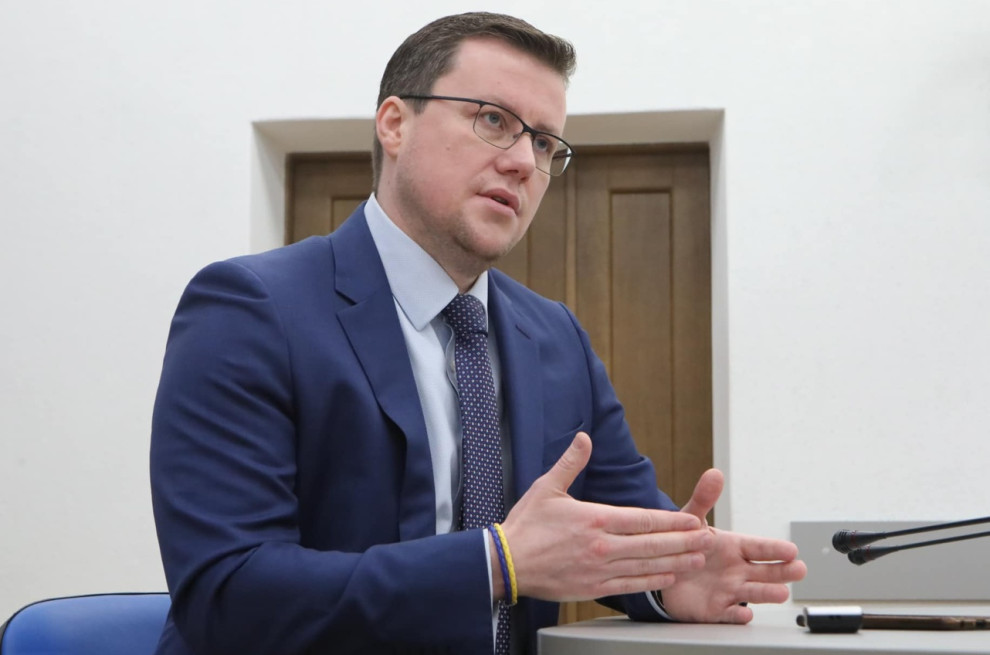Foreign direct investment is the most desirable form of investment for developing economies. It allows the implementation of large projects. Besides, it brings new technologies and practices to the country. However, since the outbreak of war, the already low investment attractiveness of the Ukrainian economy has been dropping to zero.
Today, after 12 months of hostilities, many countries have declared their intention to join the post-war reconstruction of Ukraine. Therefore, attracting investment in the face of the ongoing war is one of the most important tasks for the Ukrainian authorities in 2023. However, many experts express great doubts about the successful prospects for investing in the domestic economy: cautious foreign entrepreneurs and bankers will probably only look closely at and study our market, as the war is a too high risk of losing their money. In addition, everyone expects Ukraine to show good results in fighting corruption, reforming the judiciary, and creating favourable conditions for the business environment.
On what UkraineInvest is working on today
– What is the current format and functionality of UkraineInvest? What is your strategy?
– We have a single strategy – to promote investment in Ukraine and to accompany and support existing investment projects. It is important for investors to see that entrepreneurs feel comfortable here. As an institution, we are constantly responding to what is happening in the country.
Attracting investment during the war is a significant challenge. Of course, investors are worried about their money, because we work with private investments. And they enter the country when they have maximum confidence in the return on their investments.
Since February 24, 2022, we have been working in an ‘ambulance’ mode: we helped businesses relocate to other regions of the country and quickly cope with changes in regulatory policy (certain NBU restrictions, customs and tax nuances regarding the withdrawal/input of funds, etc.) Everything was changing rapidly, so we needed clarification and support.
Today, we are already being approached with investment plans. Thus, to some extent, we have returned to the pre-war format of work – restoring investment potential and interest in Ukraine and gradually developing new projects (starting in June 2022).
Until that time, we were not only helping businesses, but also looking at how to attract further investment. We saw the need to develop the regulatory environment. Therefore, in March and May, we developed legislative proposals, in particular, regarding by-laws and the law on ‘investment nannies’. The Ministry of Economy and the Prime Minister supported our initiative. A legislative initiative was submitted to the Verkhovna Rada to improve the law on state support for investment projects, lower investment thresholds, and expand the sectors of the economy in which businesses can benefit from state support.
– When will the draft law be put to a vote?
– As of now, the draft law is being reviewed by the Verkhovna Rada's Economic Affairs Committee. We hope that hearings on the draft law and voting on the first and second readings will take place as soon as possible. We are constantly communicating with MPs on this issue.
– And how many projects do you currently have in your portfolio that have applied for state support (according to the law on investment nannies)?
– In November-December 2021, we amended the by-laws to the law on investment nannies. It allowed us to submit the first two applications. The total amount is more than $100 million. Another application was submitted without our support. Unfortunately, the deals were not concluded because, according to the law, it would take almost four months to process the documentation. Everything was supposed to happen in March 2022, but the war broke out. By the way, one of the facilities was physically damaged by russian missiles.
We are currently working on a new list. Before the war, we had 28 projects worth $2.2 billion. And we were supposed to submit new applications for more than $800 million in March 2022. It also did not happen because all the financial indicators and key parameters of these investment projects had changed.
We now have a new list of projects – seven in total. Only two of the old ones remain, the rest are new. The total amount of projects is $1.3 billion. Applications are now being sent to the Ministry of Economy and are being prepared. We hope that by March-April, applications will be submitted for about $500 million. The specific dates for submitting applications mainly depend on the business and its readiness to provide a full list of documentation in accordance with the law and regulations.
On foreign investment inflows and new projects
– Tell us about the presence of foreign investments in Ukraine today, including large investments. What is the situation by region? How many foreign companies are registered in Ukraine? Which companies are you currently working with (the largest projects in progress)?
– When we look at the statistics, it's hard to say where exactly a company operates. Because the vast majority of registered legal entities and legal representative offices of foreign companies are based in Kyiv. However, it does not mean that they operate there.
Currently, we have such powerful investors as ArcelorMittal (the world's second-largest steel company), as well as companies such as: Eurocar, Philip Morris, Shell, Epicentr, Varus, Eva, Volia, Astarta-Kyiv, Zammler, Shell, Bosch, Electrolux, Biosphere, Cemark, Barlinek, Turkish Airlines, Hjort Knudsen, and others.
Mid-sized companies continue operating as well. For example, Morgan Furniture in Rivne. They produce furniture for world leaders such as IKEA.
We see that companies' operations do not stop, but there are cases of partial decline in economic activity related to the war. Here we focus, in particular, on the income tax. In 2021, this tax on foreign legal entities amounted to more than UAH 10 billion, and in 2022 it was only UAH 4.5 billion. That is, almost half as much.
And if we look at the corporate income tax of enterprises established with the participation of foreign investors, it has decreased from UAH 18 billion to UAH 15 billion. That is, it fell by almost 15%.
However, during the war, we are accompanying a new investment by the Irish global company Kingspan, a world leader in energy-efficient building materials. They plan to invest more than 200 million euros. The company has more than 200 enterprises in more than 70 countries. And in Ukraine, they plan to build the largest plant and the most modern technological campus for the production of building materials. The construction of the plant will begin in western Ukraine when the planning process is completed and general conditions allow it.
The company has named this project very symbolically – ‘Saoirse’, which in Old Irish means ‘freedom from aggression/conquerors’. Thus, Kingspan's arrival in Ukraine today is an important signal and example for companies that want to take such a step for the first time.
– Who else can you name among the investors?
– Nestlé, a Swiss multinational company, has announced an investment of 40 million euros in a food production plant. And the German agricultural company Bayer, which has been operating in Ukraine for many years, has announced its intention to invest 35 million euros in a seed processing plant.
They are significant for us because they have already worked in the Ukrainian market. And if they announce a new investment, it means that doing business is comfortable and profitable for them. This is how they encourage those who are still hesitant or have never invested in Ukraine. We help them understand our legislative and law enforcement framework, and provide contacts with local authorities and businesses so that they can assimilate into our territory faster.
On whom Ukraine has 'lured' from the russian market
– In the summer, you said that Ukraine was interested in foreign companies that had stopped working in russia (337 companies announced their withdrawal and 161 suspended investments) and that these companies had the prospect of starting operations in Ukraine. Which ones are we most interested in? Who have you already managed to attract: in what areas, with what money?
– Kingspan is a typical example of someone we have attracted from this list because they have left the russian market at the beginning of the aggression. We are currently in contact with companies that have suspended their investment plans in russia, and we already have several potentially interested parties.
However, the specificity of international corporations is that they cannot announce their intentions until they have made a final decision. As of today, I can say that we are negotiating with 5–7 companies from the above list, which currently includes 179 companies.
I am sure that investors will come to us, but many of them are waiting for favourable conditions in Ukraine and more affordable insurance systems. And the closer we get to victory, the greater will be the exponential progression in requests for investment and real planning.
When we talk to potential investors, we explain that if they decide to invest in Ukraine, they don't have to come here. For instance, it takes up to three years to build an enterprise, and half of this time is spent on the planning stage (finding a location, obtaining permits, recruiting a team, etc.). At the same time, the cost of planning is very low – sometimes it can be even less than 0.5-1% of the total project cost.
We communicate with various business associations (including those in the US, Germany, and France). At the end of March, we plan to participate in the Enterprise Europe Network event in Slovakia. Recently, we met with Japanese investors. They are very interested in a project in the energy and agriculture sector (location – central and southern regions of Ukraine). We will be able to announce the details only after passing certain stages of negotiations.
– What is the cost of the project, and when will it be launched?
– The cost is over $500 million. As for the launch, it's hard to say because this project involves coordination between several ministries and regions of Ukraine. It also involves coordination with a Japanese investor who is interested in obtaining financing and insurance for Japanese investments in Ukraine. Their company acts as an investor, it must also be an operator; the Japanese side also attracts financing and insurance for activities in Ukraine.
By the way, the Japanese have looked at similar projects in other countries. Our payback period is at least 3–4 years shorter than others. And we explain to other potential investors that they should start planning today, with little or no money spent, rather than waiting for the war to end. After all, you will have to spend an extra 1 to 2 years just on the planning process.
– You have mentioned that you are currently negotiating with 5–7 companies that have left the russian market. What industries do these companies come from?
– Vehicles (in particular, machines used in agriculture), chemicals, and construction materials. As for the financial component, it all depends on the specific project (plant).
Before the war started, we supported a large automotive holding company that was considering Ukraine as a place for its enterprise. The $1 billion investment was supposed to create 10,000 jobs. We had been working on it for about six months: a site in western Ukraine had already been selected, and I was supposed to meet with them in Lviv on February 15. Unfortunately, the investor's representatives were unable to come for security reasons. The project is now being implemented in another country.
However, this case does not mean that we will not attract the same plant to Ukraine after the war is over. After all, we consider the vehicle manufacturing industry (especially electric vehicles) to be one of our priorities.
A full cycle is possible – mineral extraction, engineering base, specialists and enterprises, which can be formalized through privatization, public-private partnership or by building greenfields (new enterprises).
It should be a strategic direction because it can help Ukraine become a strategic partner of the EU and other countries. If we produce a large amount of transportation that Europe needs, Ukraine will be important for global markets. Such a strategic partnership will also help to strengthen the security situation in Ukraine.
On bonuses and incentives for foreign investors in Ukraine
– How do you improve the working conditions for investors who are still in Ukraine and explain why it is worthwhile and profitable to continue investing here?
– Ukraine is an attractive place for investors even without incentives. Of course, the value of assets goes down in times of war. And after the war is over, assets will be undervalued, which will attract significant attention from investors around the world, especially in the first post-war years.
For investors, there are two key things they pay attention to. First, it is the war. And second, it is the rules of doing business. I mean anti-corruption activities. And the more anti-corruption cases we see (and I hope that the latest ones will go to court and the proper verdicts will be reached), the more interest we will get from private investors every day.
Of course, we understand that neighbouring countries have their own incentives to attract investors, so we monitor them. Currently, we are actively working with the Verkhovna Rada Committee on Economic Development and are providing them with an analytical review of what our neighbours are doing in this regard.
– And what interesting things do our competitors offer?
– For example, in some countries, an investor can receive monetary compensation for each job created. Therefore, we need to understand and be aware of such issues to keep our legal and regulatory framework in compliance and be competitive.
However, for Ukraine, the key thing now is the transparent operation of customs, tax, judicial and licensing systems. It will be the best incentive today and immediately after the end of the war for investors to come to us en masse. If there are only incentives without transparent operation of these components, we may not see investors at all.
And I am very impressed that we have now seen significant anti-corruption cases and the dismissal of Ukrainian top officials. An investor perceives this as a signal that the country is opening up and working under European and global standards.
We are also looking forward to simplifying the procedure for reclassifying land as industrial and resolving the issue of connecting to utility networks. This process should become more transparent and predictable. The practice of unreasonably inflated earnings by monopolists on connecting enterprises, in particular, to power grids, must be stopped.
On the decline in foreign investment
– Do you have any statistics on how much money foreign investors have added to our economy since the beginning of the war?
– We have statistics on foreign direct investment, but we need to understand how it is compiled. Foreign direct investment statistics does not necessarily mean a foreign investor in the end. Any investment that comes from abroad is counted as foreign direct investment. However, these can often be Ukrainian companies that use foreign structures to bring funds into Ukraine. Thus, the amount of foreign direct investment cannot be equated with the amount of capital investments by foreign companies.
The second point is that last year we saw a significant decline in foreign investment in Ukraine. In 2021, FDI reached $7.3 billion, a record amount for all the years of Ukraine's independence. However, one should understand that a large share of this structure was reinvestment (investments by companies that have already entered Ukraine and additionally invested their profits to develop their own enterprises). It is good, but we need more new capital investments.
And capital investment in 2021 was over $1.1 billion. Last year (only the last quarter), the total level of foreign direct investment was about $350 million. It is a very significant decrease.
There are no statistics yet for the fourth quarter of 2022, but I think there will be slightly better figures. In any case, we will not reach the level of 2021. It is impossible now. However, we will be able to catch up and overtake this level within two to three years. After all, rebuilding Ukraine will be a project that will involve significant investments.
On the resilience of foreign investors despite the war
– How many investors shut down their operations after February 24, 2022, or relocated their production to Western Ukraine or neighbouring countries?
– We have data on relocation in general. According to the Ministry of Economy, more than 700 enterprises have been relocated to Western Ukraine from the territories affected by russian aggression. Most of them relocated to the Lviv Oblast, followed by Transcarpathian, Chernivtsi, Ivano-Frankivsk, and Ternopil oblasts. This saved 35,000 jobs, as these companies continued operating.
We also observed the international expansion of some Ukrainian companies into neighbouring countries. In particular, Biosphere acquired a company in Romania. Thus, there was not only relocation, but also the entry of Ukrainian companies and their coverage of neighbouring markets.
However, believe me, it is easier for foreign-invested companies operating in Ukraine (and these are powerful medium-sized companies with investments of more than $50 million in a facility) to stop or partially reduce their activities to a minimum level for six months to a year in case of a threat than to relocate the company to another location.
Moreover, certain enterprises have their own specifics. For example, those that produce food beverages need to be completely modernized and restarted from scratch (even if the shutdown lasted one or two months). That is why some foreign companies have reduced their operations, but are not moving their factories to the EU in large numbers.
For example, the Austrian company Kronospan (one of the world's largest wood-based panel holdings) continues working and is thinking about developing in Ukraine; the German company Bayer has stayed and is working, and Sumitomo Electric Bordnetze (a supplier of components for the international automotive industry) is also currently in Ukraine.
For some time, there was another problem. Large international companies that bought products from Ukraine that had been manufactured for Western markets were suspending their purchase contracts. However, not because the products were not being produced, but because of the possible risk of damage to the company (if they could not receive the products and supply them to customers). The situation was quite difficult, and these companies even contacted UkraineInvest. We then contacted international companies and asked them to continue working with Ukraine.
If we talk about the enterprises damaged as a result of russian aggression (partially or completely), there are currently more than 400 of them. It is a significant figure. In general, Ukraine has more than 500 large enterprises, 16,000 medium-sized enterprises and hundreds of thousands of small ones. However, despite the damage to almost 400 companies, it is not a case where the economy stops, and all contracts are cancelled.
– Previously, Kuwait and Qatar were very interested in investing in our economy. What about now?
– It's not just Kuwait and Qatar. Saudi Arabia and the UAE are also interested in investing in Ukraine. We continue communicating with all of them to create investment mechanisms. We are constantly providing them with analytical information. In particular, we have now started working with the Ukrainian Business Council in the UAE, with which we are developing investment ideas and projects.
However, these countries are particularly interested in the food security sector: land banks, production facilities for the food industry, and maritime logistics (in particular, ports).
As for maritime logistics, it is currently difficult due to russian aggression. However, we all know that in 2020, Qatar signed the first significant concession agreement for $140 million for the Port of Olvia. Thus, the first step has been taken.
As for other projects, we are currently at the planning and negotiation stage. There is interest. And the wave of investment will be global during the stages of ending the war and rebuilding Ukraine.
On the decline in foreign investment
– Do you have any statistics on how much money foreign investors have added to our economy since the beginning of the war?
– We have statistics on foreign direct investment, but we need to understand how it is compiled. Foreign direct investment statistics does not necessarily mean a foreign investor in the end. Any investment that comes from abroad is counted as foreign direct investment. However, these can often be Ukrainian companies that use foreign structures to bring funds into Ukraine. Thus, the amount of foreign direct investment cannot be equated with the amount of capital investments by foreign companies.
The second point is that last year we saw a significant decline in foreign investment in Ukraine. In 2021, FDI reached $7.3 billion, a record amount for all the years of Ukraine's independence. However, one should understand that a large share of this structure was reinvestment (investments by companies that have already entered Ukraine and additionally invested their profits to develop their own enterprises). It is good, but we need more new capital investments.
And capital investment in 2021 was over $1.1 billion. Last year (only the last quarter), the total level of foreign direct investment was about $350 million. It is a very significant decrease.
There are no statistics yet for the fourth quarter of 2022, but I think there will be slightly better figures. In any case, we will not reach the level of 2021. It is impossible now. However, we will be able to catch up and overtake this level within two to three years. After all, rebuilding Ukraine will be a project that will involve significant investments.






